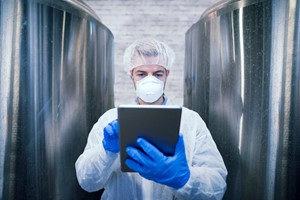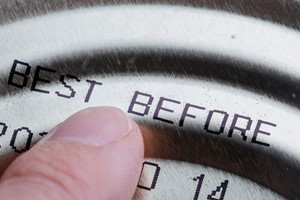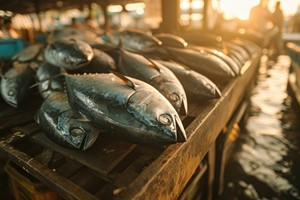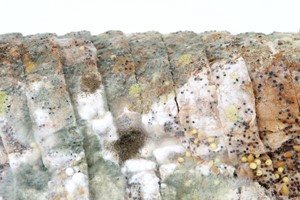In recent years, the application of biosensors in food safety assessment has captured significant attention among researchers and food industry experts alike. These innovative devices offer rapid and sensitive detection of contaminants, pathogens, and other harmful substances in food products, thereby ensuring the protection of public health. However, despite their potential, biosensors still face challenges in terms of sensitivity, accuracy, and efficiency. Enter machine learning—a transformative technology that has revolutionized various industries, including healthcare, finance, and now, food safety.
The Synergy of Biosensors and Machine Learning
Machine learning, a cornerstone of artificial intelligence, empowers algorithms to discern patterns and make predictions from data without explicit programming. In the context of biosensors, machine learning has emerged as a game-changer, amplifying their capabilities and efficacy in food safety assessment. By harnessing the power of machine learning algorithms, biosensors can deliver more accurate and timely results, facilitating early detection of potential hazards in food products.
Classification: Unraveling Patterns in Data
Machine learning encompasses various methods, including classification, regression, clustering, and dimensionality reduction. In the realm of food safety, classification plays a pivotal role in discerning discrete classes within datasets. Supervised learning, a predominant approach in natural science, entails training algorithms with labeled data to establish relationships between inputs and outputs. This method has been instrumental in developing prediction models for food safety assessment, such as regression for continuous variables and classification for discrete values.
Executive Process: From Data to Insight
The machine learning process unfolds through several stages, from data preparation and model development to validation, testing, and deployment. This iterative process refines algorithms, enhancing their predictive accuracy and robustness. Moreover, machine learning algorithms such as support vector machines (SVM), decision trees, and K-nearest neighbors (KNN) have been seamlessly integrated with biosensors to bolster their performance in detecting food contaminants and pathogens.
Main Machine Learning Algorithms in Food Safety
Traditional and classical algorithms, including K-means clustering, SVM, decision trees, artificial neural networks, and Naïve Bayes, have been instrumental in addressing food safety challenges. Traditional and classical algorithms, including K-means clustering, SVM, decision trees, artificial neural networks, and Naïve Bayes, have been instrumental in addressing food safety challenges. These algorithms leverage diverse data types and patterns to deliver precise and reliable results. For instance, SVM has been employed in nano biosensors for the detection of antibiotics in veterinary medicine, showcasing its efficacy in analyzing complex datasets.
K-means clustering is an unsupervised clustering algorithm that automatically classifies similar samples into categories. SVM, on the other hand, is a set of supervised learning methods used for classification, regression, and outlier detection. Decision trees offer a prediction model that represents a mapping relationship between object attributes and values. Artificial neural networks mimic the functions of the human brain, with each neuron interconnected to transmit information. Naïve Bayes adopts the "Attribute Conditional Independence Assumption," assuming that all attributes are independent of each other for known categories. Lastly, K-nearest neighbor (KNN) determines the category of unmarked samples by majority voting based on the class of the k nearest neighbor training samples.
Dimensionality Reduction: Streamlining Data Complexity
In domains with vast datasets and multiple variables, dimensionality reduction techniques like principal component analysis (PCA) and linear discriminant analysis (LDA) play a crucial role. By condensing data while preserving essential information, these methods facilitate more efficient analysis and interpretation. Moreover, deep learning, a subfield of machine learning, has unlocked new possibilities in food safety assessment, particularly through convolutional neural networks (CNN) and recurrent neural networks (RNN).
Challenges and Future Trends
While the integration of machine learning with biosensors holds immense promise for enhancing food safety, several challenges persist.
One of the primary challenges in biosensor development lies in the evaluation of sensitivity, accuracy, and efficiency. One of the primary challenges in biosensor development lies in the evaluation of sensitivity, accuracy, and efficiency. Machine learning algorithms address these challenges by analyzing large datasets and extracting meaningful patterns
Furthermore, machine learning algorithms facilitate the integration of diverse data sources and sensor technologies, creating synergistic platforms for comprehensive food safety assessment. Smartphone-based lateral flow assays, for example, leverage machine learning techniques such as SVM and K-nearest neighbors (KNN) to distinguish ambiguous concentrations of pathogens like Salmonella spp.
Conclusion: A Paradigm Shift in Food Safety
In conclusion, the convergence of biosensors and machine learning represents a paradigm shift in food safety assessment. By leveraging machine learning algorithms, biosensors can transcend traditional limitations, enabling rapid, sensitive, and accurate detection of contaminants in food products. As research and technological advancements continue, the synergy between biosensors and machine learning holds the promise of ushering in a new era of food safety monitoring and assurance.
Machine Learning Assisted Biosensing Technology: An Emerging Powerful Tool For Improving The Intelligence Of Food Safety Detection - Several Authors














